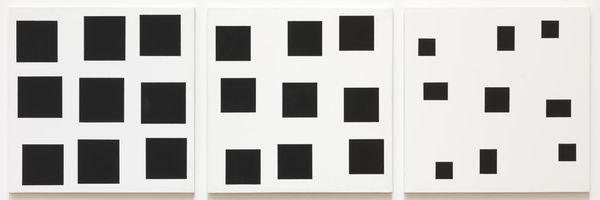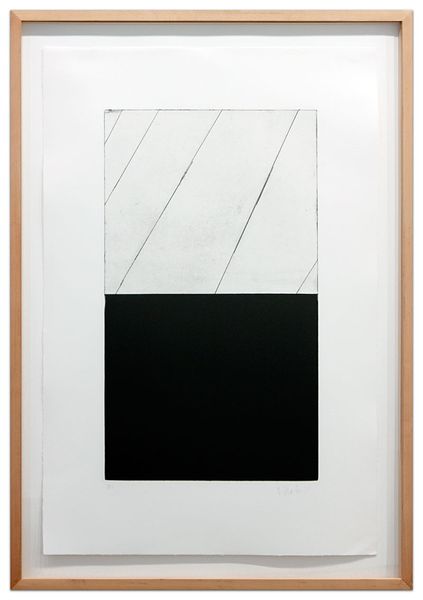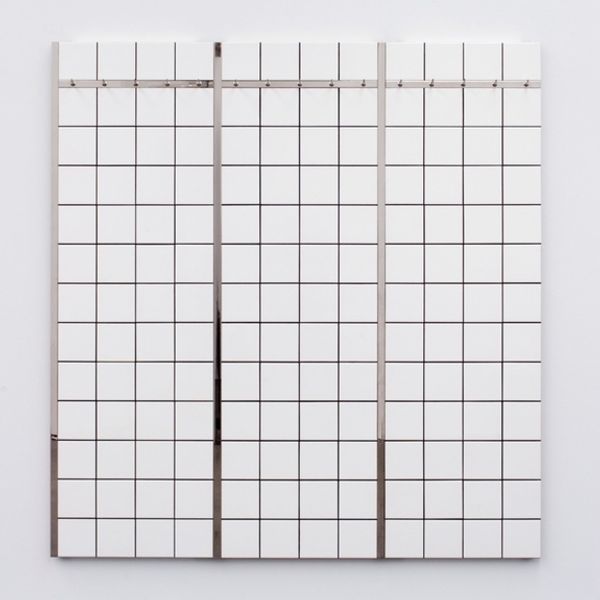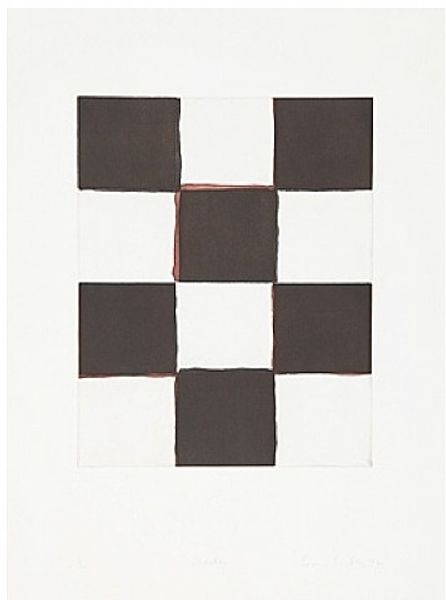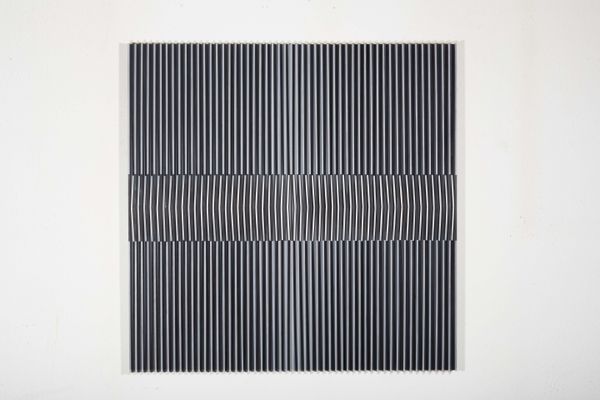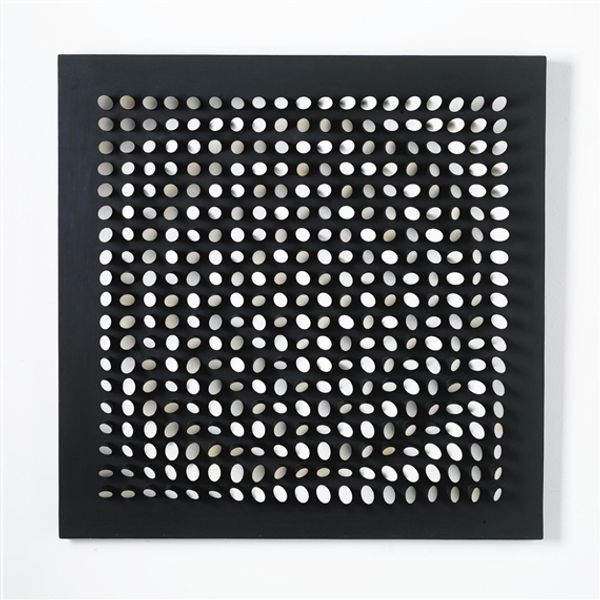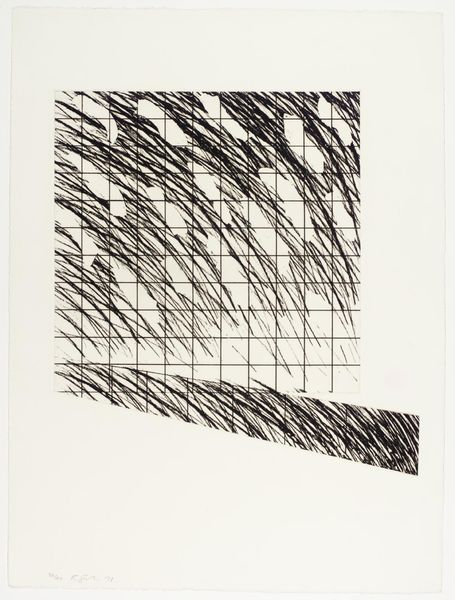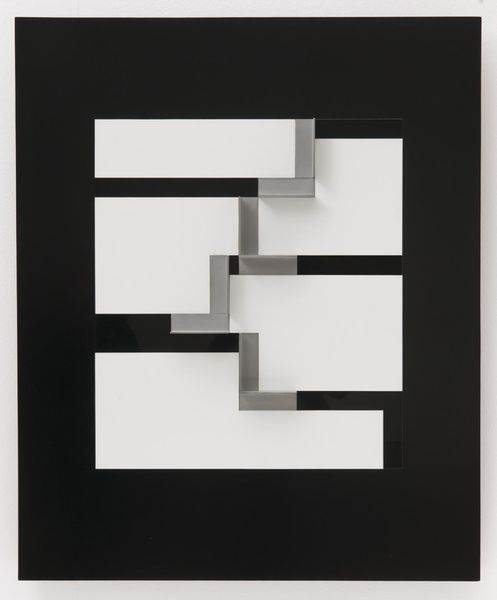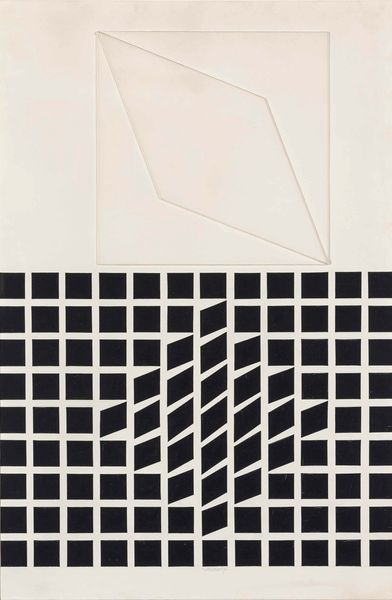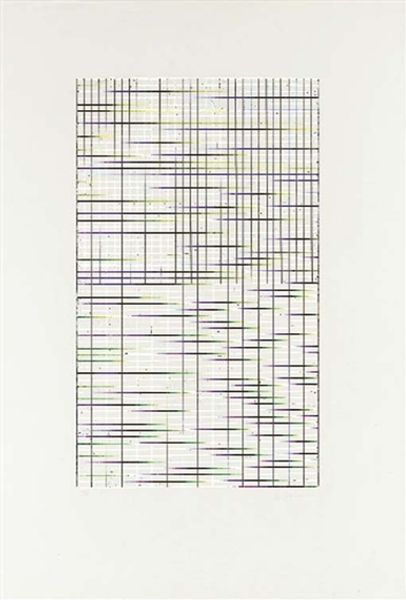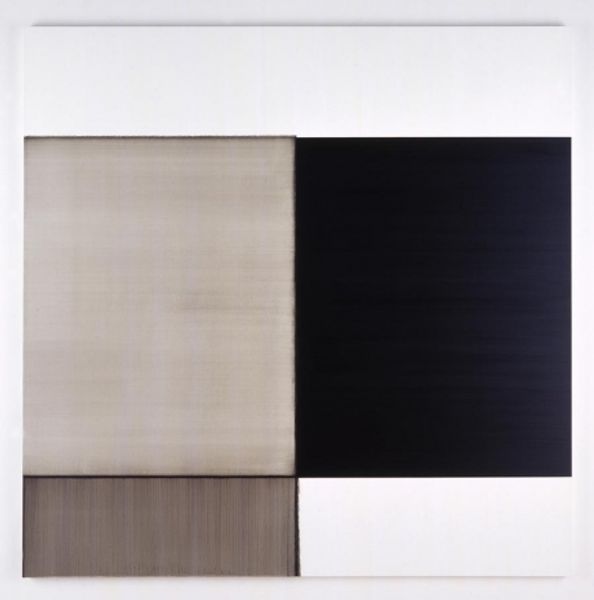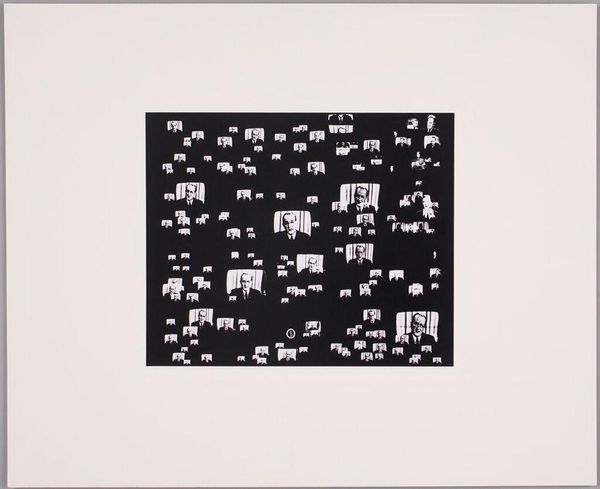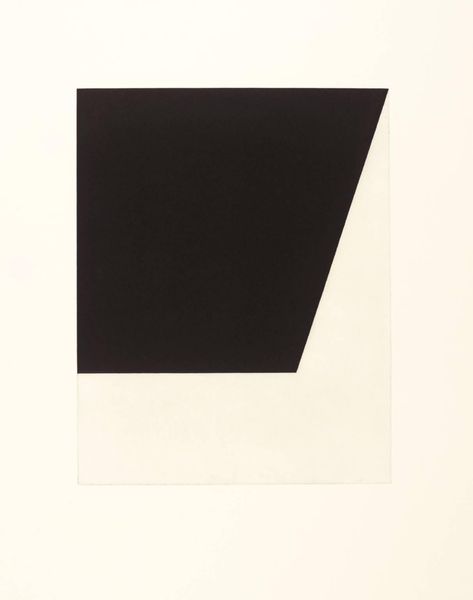
serial-art
#
natural stone pattern
#
conceptual-art
#
minimalism
#
op art
#
serial-art
#
subtle pattern
#
abstract pattern
#
minimal pattern
#
organic pattern
#
geometric
#
simple pattern
#
vertical pattern
#
abstraction
#
pattern repetition
#
combined pattern
Copyright: Jean-Pierre Raynaud,Fair Use
Curator: This is Jean-Pierre Raynaud's "Premiere étude pour Noirlac" created in 1975. It appears to be a study, perhaps in serial art or even minimalist abstraction. Editor: It's incredibly stark. The bold, black lines against the white background give me an immediate sense of rigidity, almost like a blueprint devoid of any warmth. Curator: Right, rigidity is key here. Consider how this seemingly simple pattern engages with serial production and the deliberate removal of expressive gesture, echoing the factory line's influence on art production itself. What kind of materials might have been used to create such precision in repeated imagery? Editor: It makes you think about control and precision in a world of constant change. It must've taken careful craftsmanship and skilled labor to produce the image. However, why the Noirlac reference in the title? Is there something to be gleaned from situating it in a specific place? Curator: Precisely. Noirlac Abbey, a former Cistercian monastery, becomes a vital component of the artistic process here. This piece could be considered in relation to architectural plans or perhaps the use of tile and design for such a structured religious structure. Also, thinking about art consumption here, the grid form allows for easy distribution of the work, echoing modularity. Editor: That resonates deeply. The historical weight of the abbey and its ordered monastic life juxtaposes sharply with the cold aesthetic of minimalism. Is it meant to critique those rigid structures, or somehow idealize their functionality and organization for art? What was Raynaud trying to say about institutions or ways of life with the cold austerity of geometric construction? Curator: Perhaps both? It questions traditional art values by focusing on process over pure visual enjoyment. At the same time, he is perhaps prompting reflection on how history and places imprint upon abstract, material forms. Editor: It does force a confrontation between the conceptual and the lived, the historical and the manufactured. There's an intellectual challenge here that moves beyond just aesthetic appeal. Curator: Agreed. There is more beneath its rigid surface than initially meets the eye. Editor: Absolutely, this initial stark impression prompts richer thinking about systems, structures, and our relationship with places steeped in history.
Comments
No comments
Be the first to comment and join the conversation on the ultimate creative platform.
